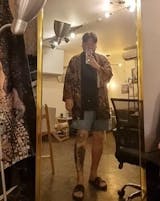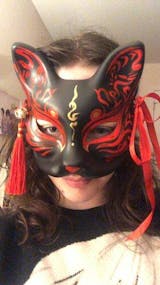
The kimono is a much-celebrated garment that you will see in all of Japan's history. In every era, the dress was a prominent cultural symbol for the Japanese. It made its way into special events such as weddings or funeral ceremonies and even celebrating the New Year. The styles, patterns, and colours have changed quite a lot over time, and there are numerous options to choose from now than there were before. Indeed, the first kimonos were not as extravagant as the ones you see on Japan's streets today. These kimonos can be tailored and adjusted to any design you desire.
Who Wears the Kimono?
The Japanese kimono has long sleeves, and the entire dress is floor-length, meaning it covers your entire figure, head to toe. The garment is modified and adjusted according to the wearer's preferences and the weather. For example, luxurious kimonos crafted from silk or linen are reserved for special occasions such as weddings, or ceremonies, while casual kimono dresses are used more often for everyday activities. These kimonos are made from cotton, and they do not hinder one's movement as much.
The kimono was not just a special garment that the Japanese saved for their significant events in earlier times. It was the dress that every citizen wore regardless of their social background. The kimono unified the Japanese and helped outsiders to recognize them easily. Men, women, and children of all ages wore the kimono casually, and it soon became the most prominent Japanese garment. The kimono was also the military uniform before the Westernization period, which shows how the garment had spread in its recognition.
However, due to Western clothing rising in popularity in Japan after the nineteenth century, the kimono fell out of fashion. Government workers discarded their kimonos and opted for Western business clothing, as they were required. At this point, only women and children could wear the kimono for their daily activities, and they were encouraged to do so. This practise is still carried out today, and if you happen to visit Japan, you will mostly see women and children wearing traditional kimonos for their religious or cultural events. Men's kimonos are also called Samurai, but they are declining in popularity, and you are unlikely to see many men wearing their historical garments in Japan today.
What Goes Into Making a Kimono?
The earliest kimonos were stitched together with two large pieces of cloth. The crafting and design were quite uncomplicated as the garment was in its initial stages. There were no elaborate patterns to go over the hem and sleeves, and the fabric used was usually cotton or polyester. As making a kimono was simple, it could be stitched at home for the entire family to wear. Indeed, many houses during the Edo period had their rooms in which constructing the kimono took place. Although women were responsible for the casual, everyday kimonos, men were required to look after the more luxurious kimonos made from silk.
Soon, the kimono grew in popularity, and the dress needed more attention so it could be upgraded into the delightful garment we see today. Skilled spinners, weavers, and merchants were involved in the business of kimono-making, and the garment spread forward in the coming generations. In some traditional stores in Japan, the ancient pattern books are still used that were popular in practice during the Edo period. As the garment itself is symbolic and significant to the Japanese, the ancient methods are treasured. A few magazines dedicated to kimono illustrations are still in circulation today as the design and patterns for the garment progress.
Dyeing of the kimono was a complex process that involved skilled specialists. Each village was equipped with its own dye house that took care of colouring all the fabric that was later sent to warehouses to be stitched and cut. Techniques for dyeing the kimono varied in every period. Tie-dying, which involves tying the cloth in certain ways and submerging it in the dye, was quite common during the 18th century. It is still in practice today when using stencil art or creating abstract patterns for women's kimonos.
Silk, and its compressed version called crepe, are undoubtedly the most popular fabrics that go into the makings of a kimono today. Those who get their kimonos tailored and customized can choose from up to 36 types of silk, not including the colours. The inner layers of a kimono need to be made of a sturdy fabric that can properly uplift the wearer's skirt and not irritate the skin. The fabrics used for this purpose are typically synthetic cotton, wool, and polyester.
How is a Kimono Decorated?
A kimono can be plain, with the colours highlighting the symbolic features of the dress, or be decorated luxuriously with embroidery, art, decals, and patterns. As it was with the patterns and weaving, embroidery on kimonos was first introduced during the Edo period, during which it also reached its peak. Designers were free to use whichever colours appealed to them. This freedom gave rise to majestic prints and shapes made through embroideries, such as paper cranes, flowers, pine trees, and koi fish.
Today, embroidery is used hand in hand with patterns to create a striking design on kimonos. However, if only embroidery is used, the fabric underneath will likely be satin or silk, which has a tremendous effect. Designers may choose to embroider onto the fabric with silk thread that shows off the work even in dim lighting when stitching high-quality kimonos. These kimonos can be costly to produce and even more expensive to buy, so they are reserved for the wealthy or very special occasions. Although factories and warehouses catering to kimonos are widespread in Japan, some stores still choose to embroider the garments with needle and thread by hand, honouring the centuries-old traditions. Similarly, the dyeing techniques used in the 17th century are still increasingly popular. The practice of applying pre-coloured paste to fabric is used by kimono-makers today to create modern patterns and art.







